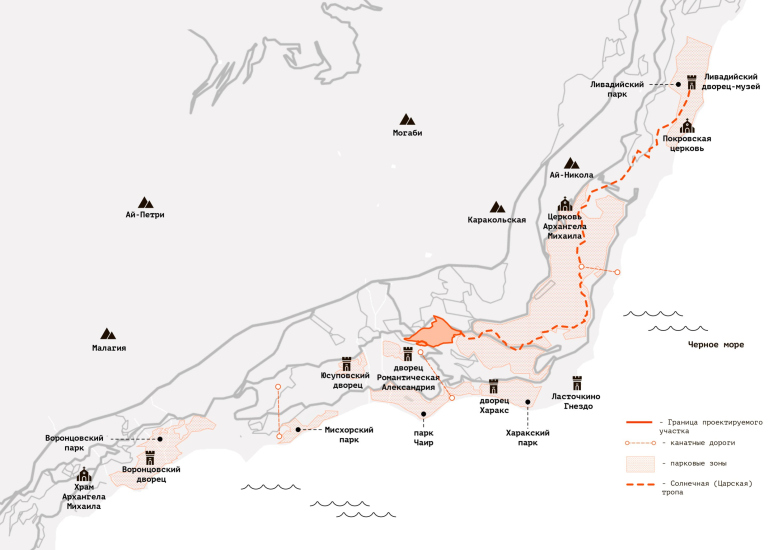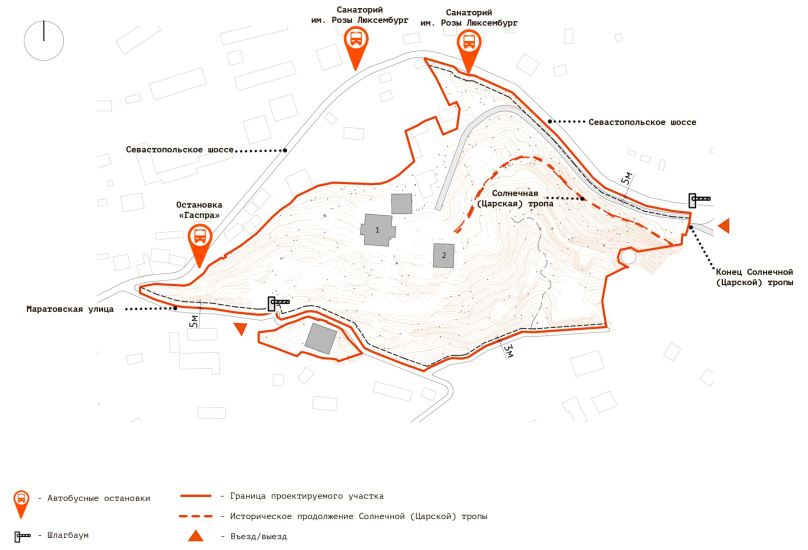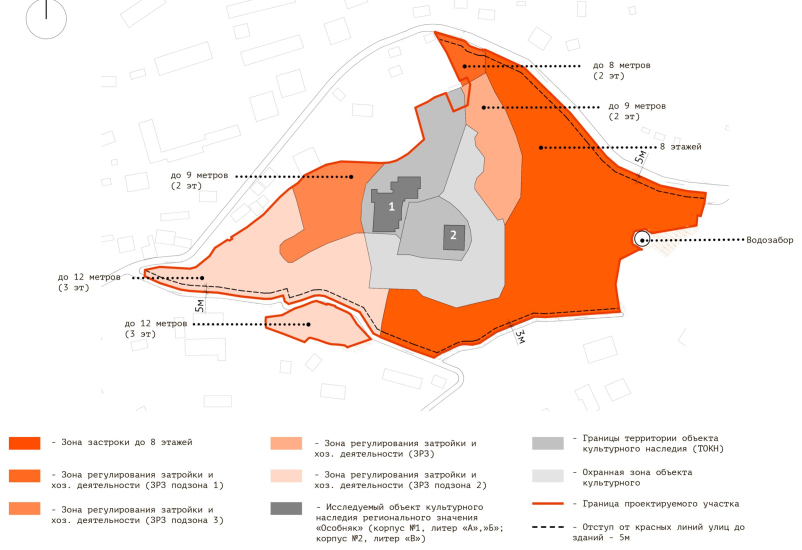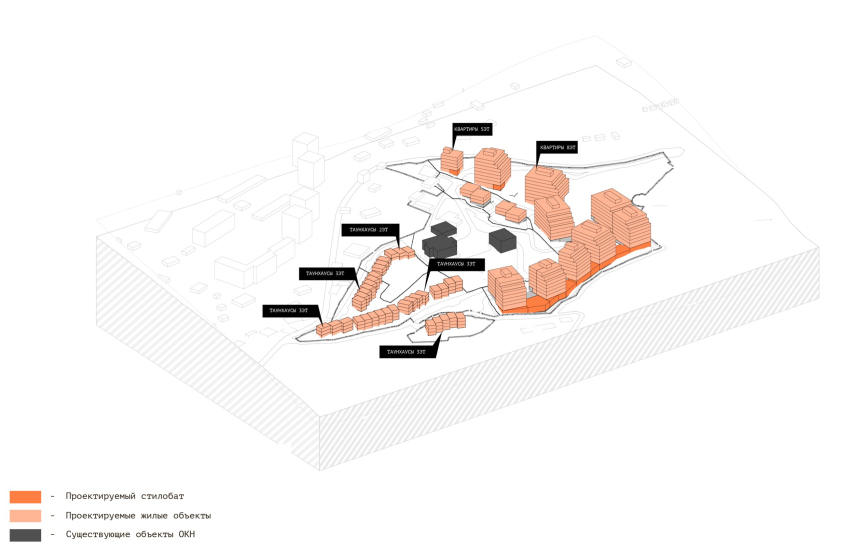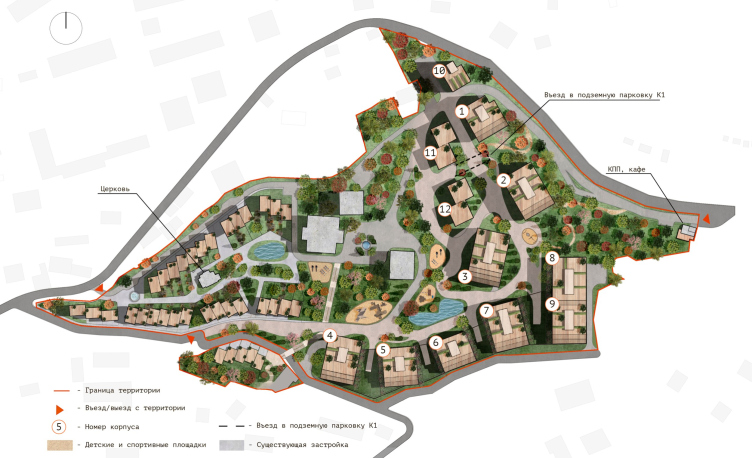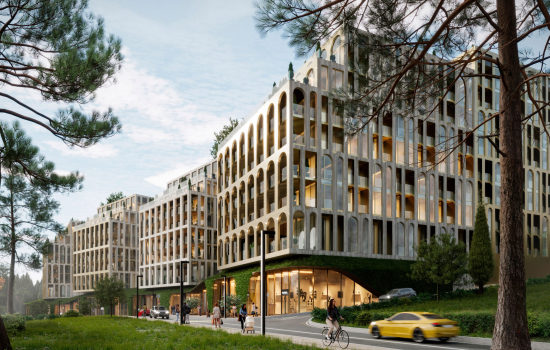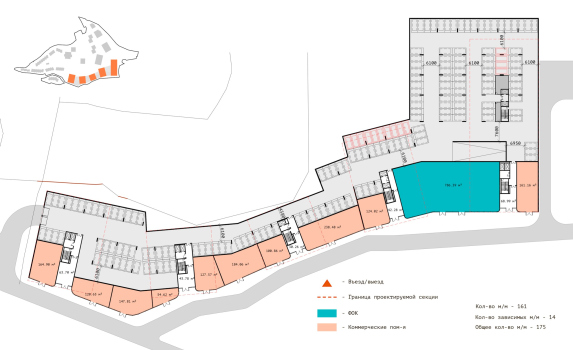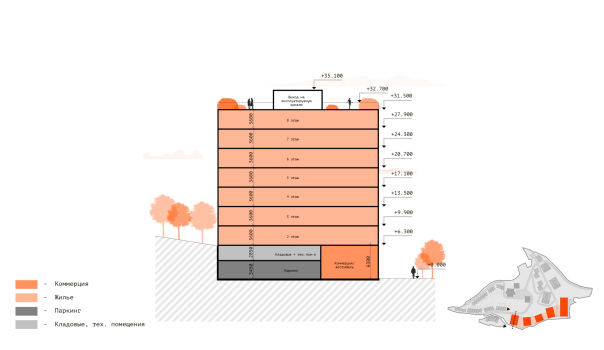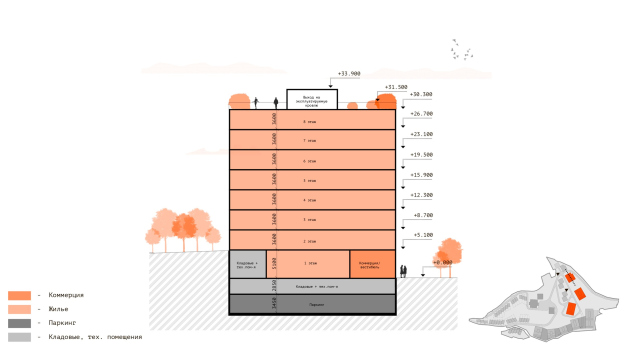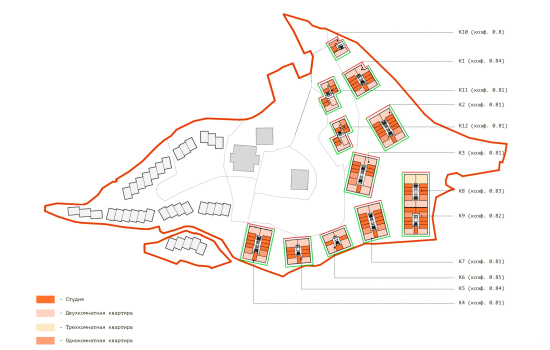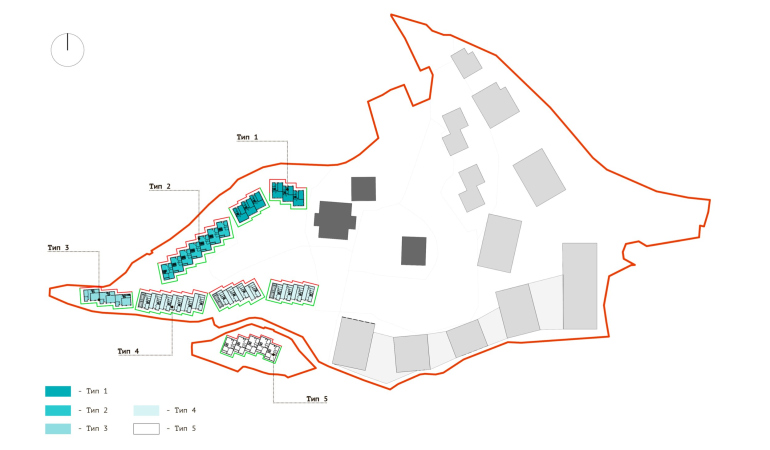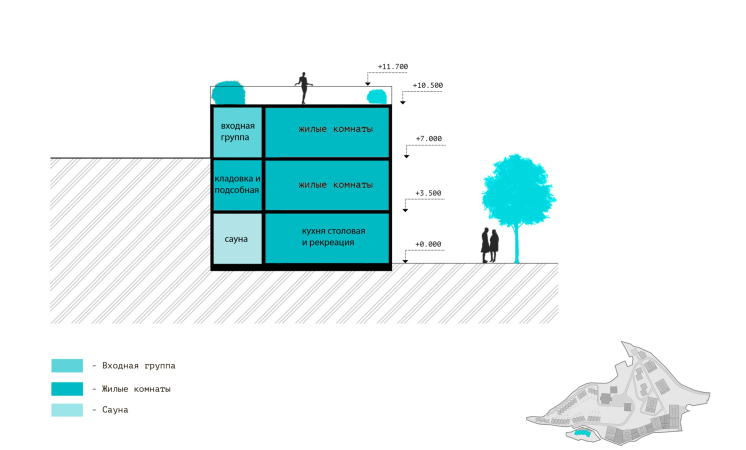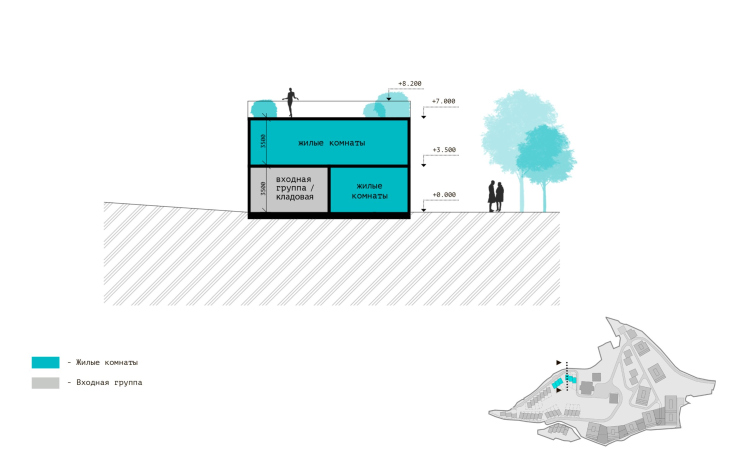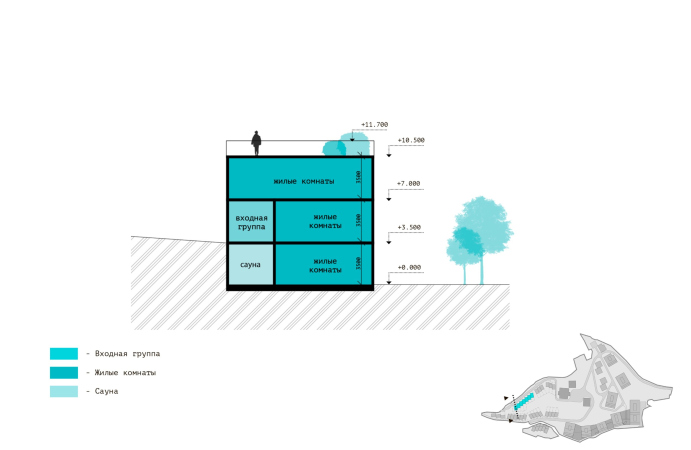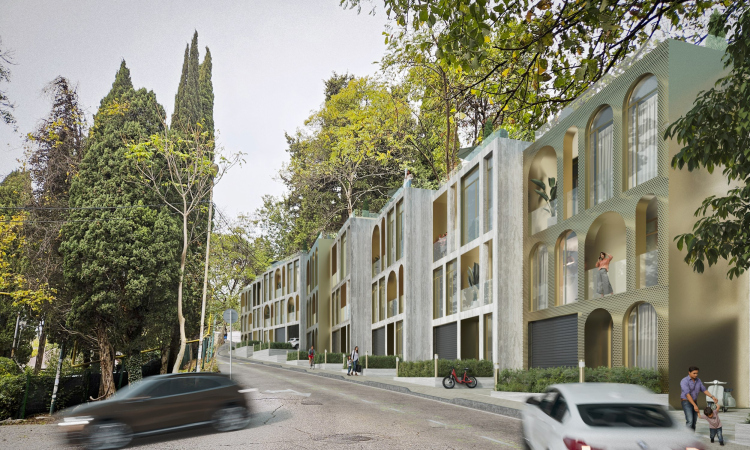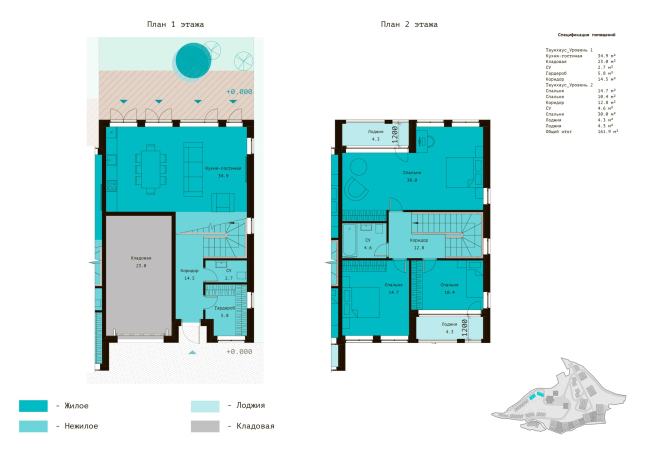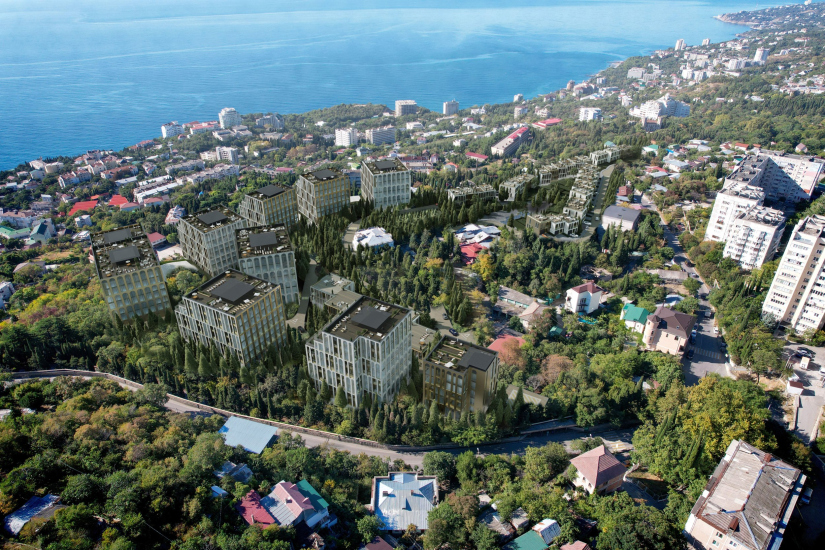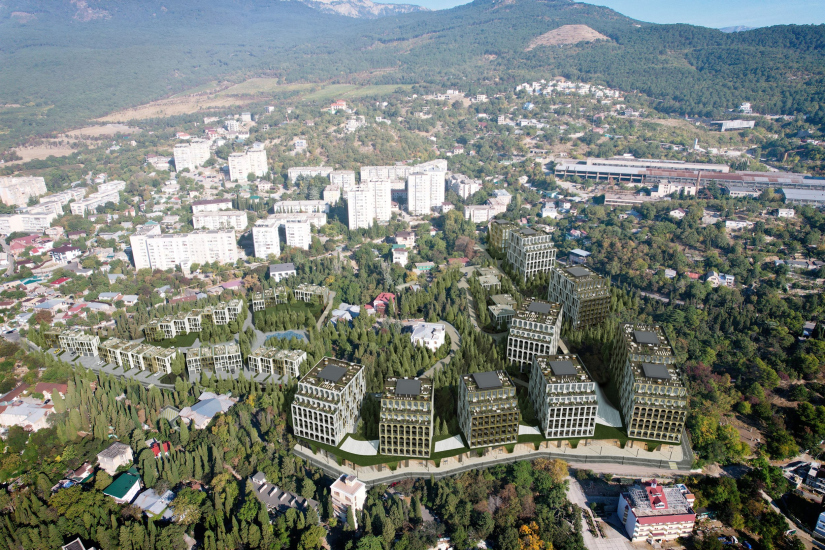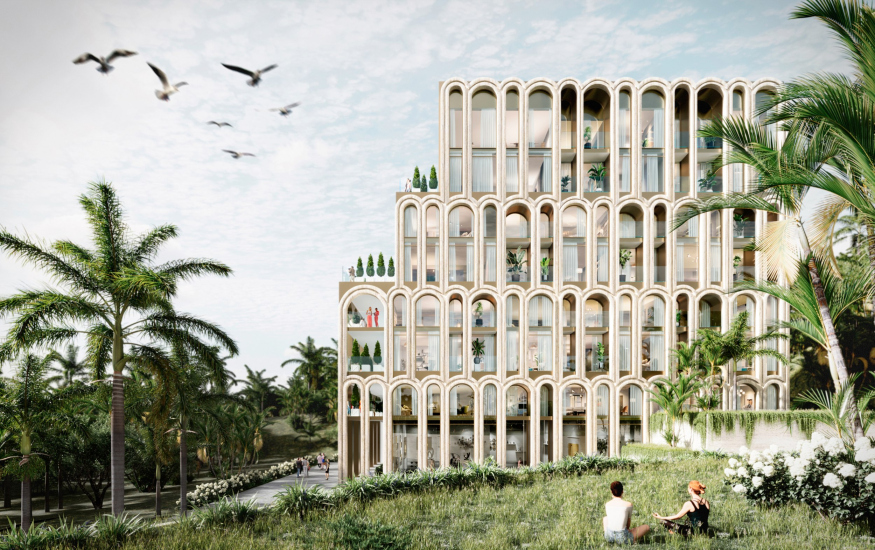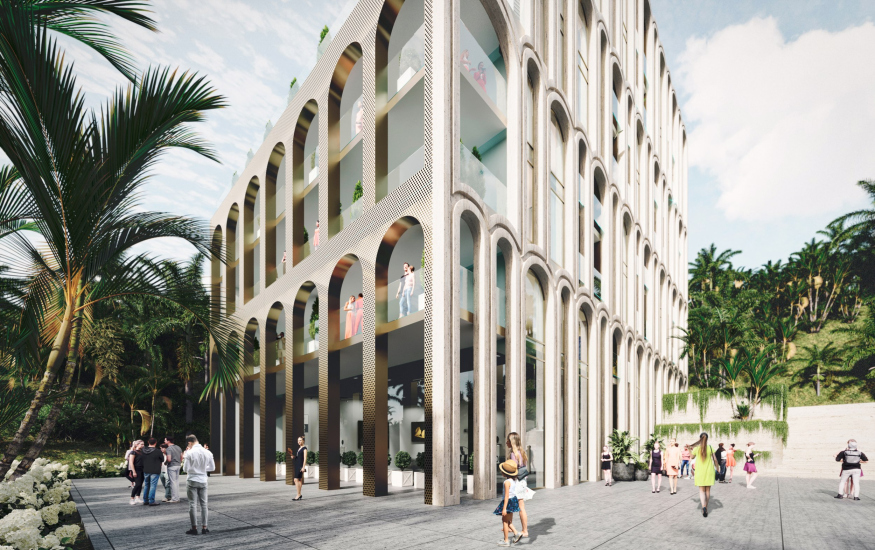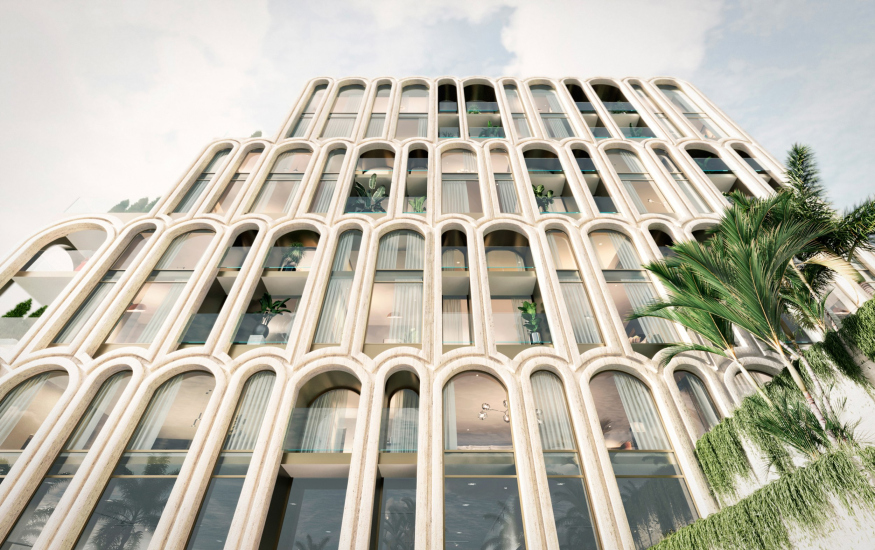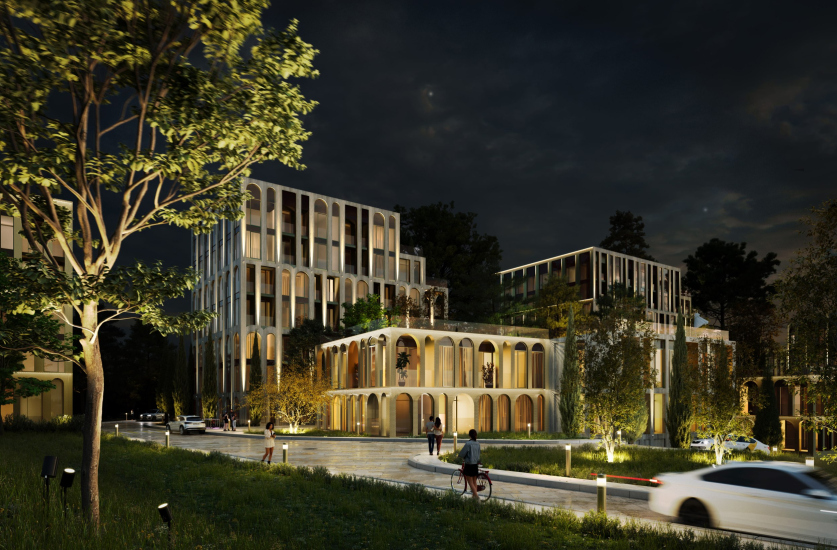The land at Ai-Todor was acquired in 1869 by Grand Duke Mikhail Romanov for his wife Olga Feodorovna, who later passed the estate to their son Alexander. Looking at archival photographs – lush greenery against mountain backdrops, wicker chairs, window awnings, and numerous children in white outfits – one feels the impact of the 20th century particularly acutely.
During the “Romanov” period, construction at the estate followed designs by Yalta architects. Mikhail Kotenkov was the author of the surviving palace with peculiar carved wooden elements on its façade. In 1912, under a design by Nikolai Krasnov, a “wing” was built for Alexander’s seven children: this two-story building reflected the Grand Duke’s fascination with archaeology, with facades and interiors adorned with antique bas-reliefs, presumably found during excavations of the Roman fortress Charax on Ai-Todor Cape. These two buildings, along with the school built in 1912, were later converted into the health resort buildings. The church survives today as a residential building, and a number of outbuildings have also endured. Another relic of the time is the so-called “Horizontal Trail” initiated by Alexander – the very Tsarskaya Tropа along which one could reach Livadia. It was this trail that inspired the name for the new residential complex.
The health resort continued operating in the estate buildings until 2017, when it was put up for sale. Only two buildings – the Small and Children’s Palaces – have regional cultural heritage status. In accordance with the established preservation requirements, height restrictions are imposed. No major restorations of the complex have been undertaken to date.
The Ai-Todor estate covered more than 200 hectares during the imperial period; today, as seen in the plan above, the protected zone outlines the historic palaces, while on the adjacent plots, buildings from 2 to 8 stories are permitted. In addition to the palaces, the 1860 Dining Hall will also be preserved and restored. However, neither the timeline nor the contractor for this work is known, nor is the future function of the buildings.
It is clear that one of the main tasks for Sergey Nikeshkin and the architects at KPLN was, on the one hand, to maintain distance from the heritage monuments, and on the other, to respond in some way to the historic surroundings.
Accordingly, the project authors, as the terrain allows, push the construction toward the site boundaries, thereby enlarging the central “island”. This creates two wedges framing the estate buildings. The smaller wedge, located in the western part, consists of three-story townhouses. The larger wedge in the east comprises mostly eight-story apartment buildings, as well as four urban villas whose scale corresponds to the historic structures. Another block of townhouses will be built on the site of the 1912 school, separated by a stretch of road; this “enclave” will be connected to the main plot via a pedestrian bridge leading toward the boulevard and the historic staircase to the Children’s Palace.
“Tsarskaya Tropа” housing complex. The master plan
Copyright: © KPLN
On the southern side of the site, along Maratovskaya Street, a structured urban space is formed, defined by a stylobate that unites five buildings. The stylobate is integrated into the terrain with a 5-meter difference in elevation; parking and storage are located in the recessed section, while the lobbies and commercial spaces face the street. A similar “semi-underground” level exists in the freestanding buildings on the northern side of the “wedge”. The architects propose to disguise the stylobate with greenery – as if a hill “grows” through the buildings, with illuminated shopfronts leading into stores built directly into the hill; this effect is common, especially in southern cities. The “hill effect” is thus achieved through vertical greenery that transitions into green roofs.
KPLN employed a similar, even more ambitious solution in their project for the Karachay-Cherkessia airport, where they essentially turned the airport roof into an artificial hill – here, however, the design rather echoes the surroundings. From the upper side, pedestrians will be able to walk directly onto the stylobate roof, and all roofs of the new complex’s buildings will be accessible, landscaped, and usable by the future residents and their guests.
Within the rows of townhouses, the area takes on a distinctly suburban character – without shops or cafés, but still featuring well-maintained sidewalks, lighting, and small front gardens.
All of the eight-story buildings have an almost square rectangular construction footprint and a unified sculptural composition: the top two floors are recessed, creating open terraces facing the sea. This orientation is not just logical, but almost inevitable for resort housing. Looking at the urban landscape of Gaspra as a whole – or at least the immediate surroundings of Ai-Todor – one sees, as in nearly all our Black Sea settlements and seaside resorts, a coexistence of two or three types of housing: for example, twelve-story panel buildings alongside individual houses, or large hotel blocks next to private cottages.
Here, the townhouses rather relate to the individual houses of the village, forming a low-rise fabric of roughly the same height, while the eight-story buildings “dialogue” with the Soviet-era apartment blocks. The site also has a significant height difference: the townhouses and nearby village houses sit around 190 meters above sea level, while the taller buildings, like the ones composed of Soviet apartments, are about 10 meters higher. This creates different volumetric relationships: the first cluster flows into itself, not rising much above the trees, while the taller buildings engage in a dialogue across a distance of 300 meters.
The heritage monuments in the central part of Ai-Todor act more like observers: by stepping back from the palaces, the residential buildings create a sort of polite buffer – a pause that could potentially become a zone for future historical and cultural development.
While the massing of Tsarskaya Tropа primarily responds to the morphology of the surrounding Gaspra development, the façade solutions introduce a number of new approaches relevant to contemporary architecture.
The façade grid of the eight-story buildings forms modules stacked over two stories – a very current technique aimed primarily at visually reducing scale, with the additional benefit of creating more slender, vertical proportions. Another modern motif is arches without imposts or archivolts. These come in several variations: throughout the complex, in buildings of any height, there are arches made of stone or golden perforated mesh; in the townhouses, decorative elements are minimal, with flat stone surfaces, while in the larger buildings, the stone surface is incised with shallow grooves, emphasizing the form for better readability from a distance.
Metal alternates with stone here, just as the arches alternate with orthogonal grids. In the townhouses, these changes occur more frequently, section by section, facilitated by the “sawtooth” arrangement of the block volumes, slightly offset from one another. In the eight-story buildings, the facades alternate as well, with two adjacent facades on the same volume usually differing. Altogether – especially with the arches made of light Jurassic limestone – the composition evokes both temple bays and oriental mashrabiya screens, thereby responding to the character and historical legacy of the site.
The alternation of arches and grids also references the architecture of the Ai-Todor estate buildings, although this is neither a background nor an imperial-historicist style: it is an independent statement in both proportional composition and materiality.
The ceiling heights in the apartments reach 3.6 meters, providing a comfortable scale and, of course, noticeably taller than the Soviet twelve-story buildings on the same slope. Slightly more than half of the units in the eight-story buildings are studios, reflecting the resort nature of the area, while apartments with the best views – of the sea, the palace complex, and the mountains – are multi-room units. Some of the first-floor apartments have small front gardens. In several units, including studios, a one-and-a-half floor height is planned, with a mezzanine level for the bedroom. Apartment sizes range from 23 to 204 square meters.
While the buildings themselves have been pushed toward the edges, landscaping occupies a substantial part of the site: surrounding the palace buildings, the initial stretch of the Tsarskaya Tropа leading from Maratovskaya Street, and the grand staircase. Valuable old trees – cypresses, sequoias, cedars, oaks, and others – are planned for preservation. Near the townhouses and the new church, an artificial pond will be added. The architects actively use the terrain to create a diverse landscape through amphitheaters, cascades, labyrinths, and stepped garden compositions. Attractors, as well as children’s and sports playgrounds, will be connected by a pedestrian boulevard.
Construction of the complex has already begun, with completion planned by 2030.


